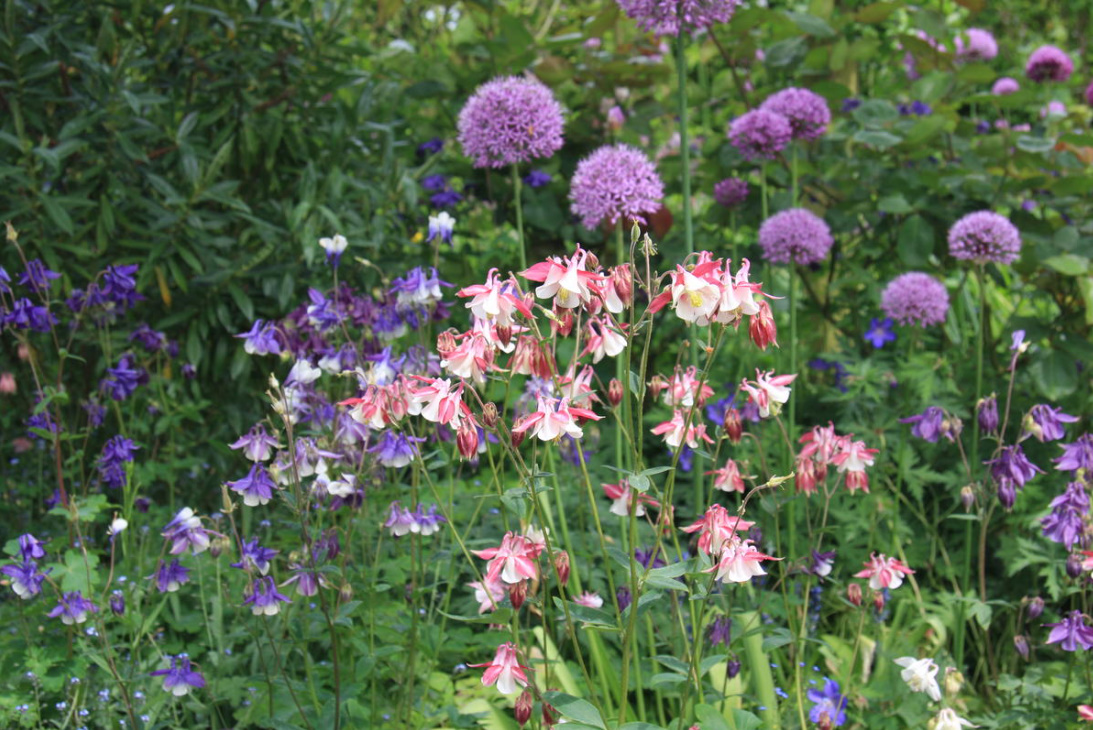
4. Peony. From evil spirits
An ancient legend says that in the old days, a man who achieved wealth and fame, necessarily planted a herbaceous peony in his garden. And all because this flower was considered a symbol of love, wealth, nobility and courage. Another incredible property is attributed to him — allegedly he is able to put evil spirits to flight, and a kind of “necklace” from various parts of the plant reliably protects its owner from all kinds of diabolical obsessions. Is it any wonder that in ancient times some of the plant varieties were valued dearly and exchanged only for gold.
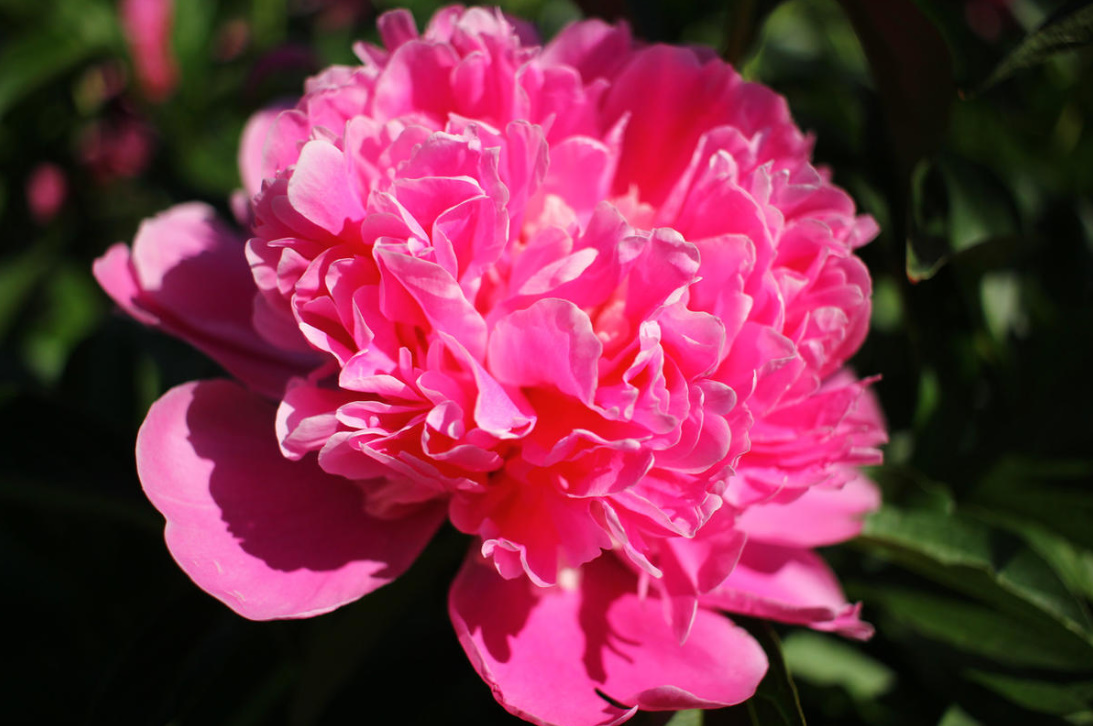
Where to plant
This plant is an undisputed long—lived, so it is important to immediately choose the right place for it. Peonies prefer sunny, sheltered places from the wind, but remember that trees and shrubs should not be located too close, because the roots of peonies go deep and to the sides by 70-90 cm. It is not recommended to plant bushes too close to the house, as the walls emit heat, and overheating can be disastrous. The soil should be slightly alkaline and moderately moist, but without stagnation of water, which leads to rotting of rhizomes. Fertile loamy soils are best suited for peonies.
How to care for
Care involves periodic weeding, loosening, mandatory watering during drought (to the full depth of the roots) and double watering with phosphorus and potassium before and after flowering.
Important: lack of moisture during flowering leads to weakening of flower buds.
For the winter, the entire aboveground part of the plant is cut down to ground level, but this should be done only after the stems are cut after the first frosts.
To get larger flowers, it is necessary to pinch the side buds (3-5 pieces are formed on each peduncle) and leave the central one.
Tip: do not allow the soil to dry out, if you rarely visit the garden, by hitting — mulch the flower beds.
What to use it for
The plant is usually included in flower arrangements, borders and front gardens. In landscape design, peonies are used for single or group plantings, low-growing varieties are used to decorate the border. Peonies also look great in a solid planting in the foreground of a hedge of shrubs.
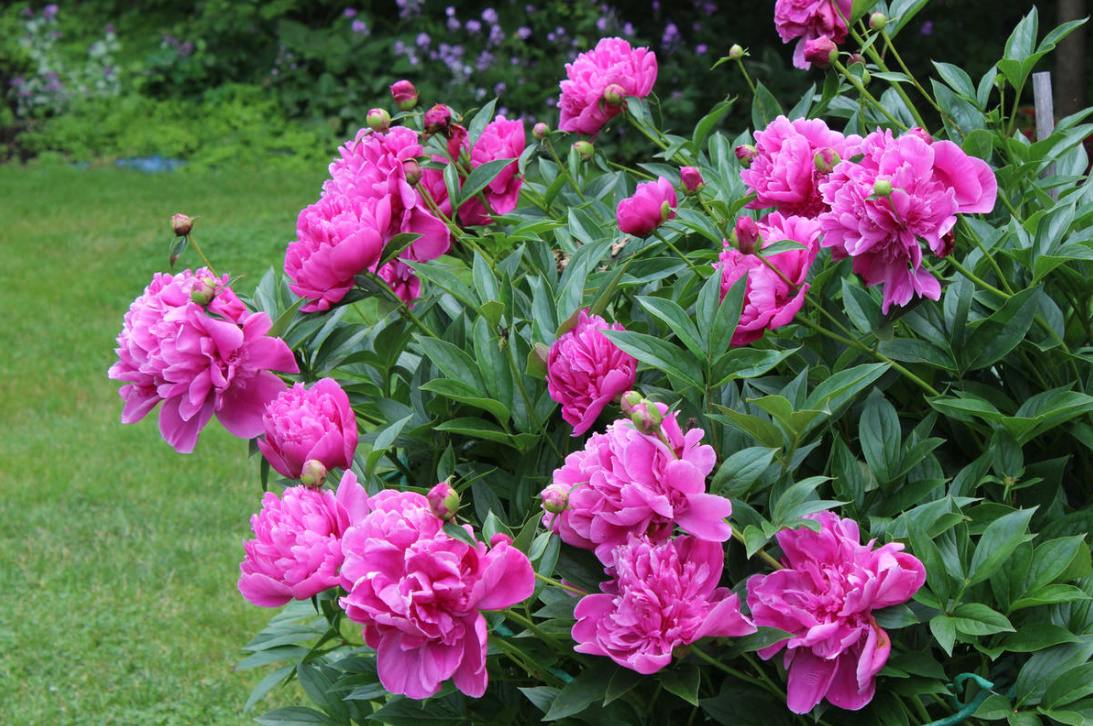
What to combine with
The ideal partner is Geranium of all kinds, including the modest but beautiful compound—flowered Geranium magnificum. This subspecies is best planted next to dark or brightly colored varieties of peony, but the flowers of white, milky and light pink color are ideally combined with Pelargonium graveolens.
Which varieties to choose
- ‘Ama no Sode’ — large (up to 14 cm in diameter) pink cup-shaped flowers.
- ‘Ballerina’ — large (16 cm in diameter), double flowers, white with a greenish tinge.
- ‘Bartzella’ — very large (up to 25 cm in diameter) double flowers, bright yellow with red smears in the center.
- ‘Cytherea’ — flowers are semi-double (diameter up to 16 cm), coral when dissolved, later lighter.
- ‘Julia Rose’ — semi-double flowers with a color that changes as they bloom (from cherry red to orange pink, and then to yellow).
5. Aquilegia. A shoe for an elf
Such a romantic name for aquilegia was invented by ancient Germanic tribes. But the North Americans saw it as a symbol of peace and called it “columbine” (dove). The elegant flower also brought a positive mood and some fabulousness to our gardens, where aquilegia hybrid settled — in all the splendor of diverse and spectacular varieties bred by breeders.

Where to plant
The most suitable place is in partial shade or in the open sun. Moreover, by choosing the first option, you will provoke active growth, prolonged flowering and — obtaining the largest possible flowers. For planting, choose moist and rich in nutritious humus soils with a loose structure.
How to care for
The plant will definitely not cause you any special problems, the “dove” needs only the usual garden procedures — loosening, weeding and watering. It can withstand short periods of drought and spring frosts on the soil.
After the flowering is complete, do not forget to cut the peduncles to the level of the basal rosette of leaves. This procedure will not only give a neat appearance to the flower garden, but also prevent its clogging with hybrid self-seeding, because all plant varieties easily interbreed with each other.

Tip: every year it is advisable to pour fertile soil under the bush to cover the growing bushes that bulge above the soil level.
Which varieties to choose
- ‘Songbird F1’ — blooms in the first year after sowing, forms flowers of amazing beauty and a variety of colors with a diameter of 9 cm. The height of the bush is 35 cm .
- ‘Swan Red and White F1’ is a plant 60-65 cm tall with bright red and white flowers 8-10 cm in diameter.
- ‘Spring Magic’ is characterized by abundant and long-lasting flowering. The height of the bush is up to 35 cm, colors — blue with white, ultramarine with white, yellow, light pink with white, cherry with white, white.
- ‘Biedermeier’ is characterized by low growth (up to 50 cm), double-colored double flowers, as a rule, red and yellow, white and blue, purple and blue shades are combined.
- ‘Mrs. Scott Elliott’ is an elegant plant with delicate gray—green leaves and large (up to 10 cm in diameter) flowers of white, yellow and red-yellow color. The height of the bush is 80 cm.
What to combine with
In the company with aquilegia, Lupinus and Aconitum, Saxifraga (with low-growing varieties), irises, Bergénia, ornamental grasses, variegated and monophonic Hosta, Astilbe and ferns look harmoniously.
What to use it for
Low-growing varieties look especially impressive in rock gardens. Fine openwork leaves will fill the space between the stones, and bright flowers will decorate the rockery. Miniature bushes are ideally combined with Saxifraga and other ornamental Alpine plants.

You can grow such aquilegia in pots and boxes on the loggia or terrace. Aquilegia of tall varieties will fit into perennial flower beds, decorate flowerbeds, mixborders, as well as the shores of small artificial reservoirs.

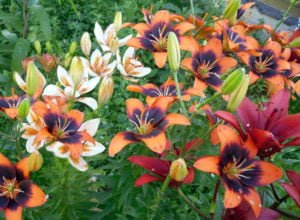
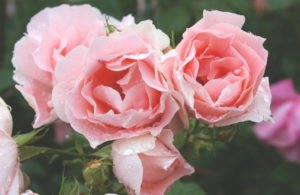
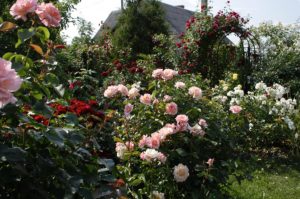
Leave a Reply